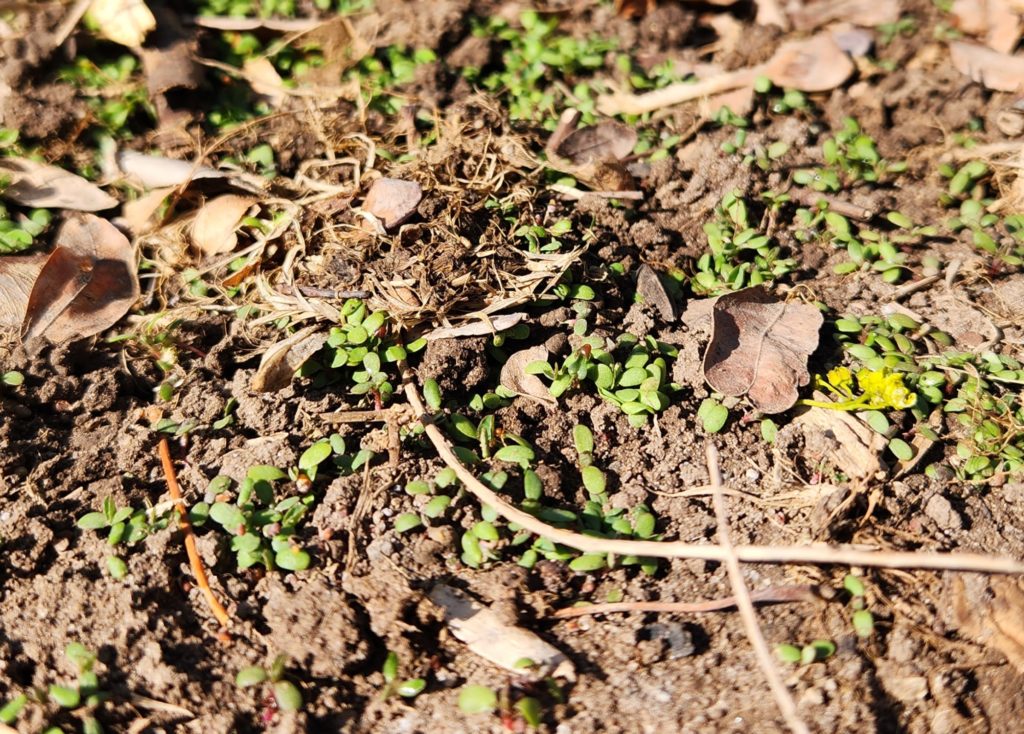Last summer a large section of our lawn died. A combination of heat, drought, misaligned sprinklers, and inattention (my personal resources were over-tapped) turned it from thriving green plants into a crispy yellow dirt patch. Every time I went outside I felt the weight of failure as I considered the results of my poor stewardship. Months later, I still feel that failure. It it is an indictment of my gardening, and somehow also a commentary about the world at large. As if the ecological disaster of the drought were playing out small scale in my yard. I can grant myself compassion and grace over the situation. I really didn’t have any attention to spare, but that doesn’t change the dirt patch.
I’ve found myself in a season with a few more resources to spare. Not a lot. I can’t pay a landscape designer to come in and reconfigure my entire yard to be more drought friendly and correct all my sprinkler placements. But I can take tiny corrective steps. So, I bought clover seeds and scattered them. Thousands of tiny seeds in a vast swathe of dirt, each seed carrying the hope of green abundance later. Green clover will thrive better in dry circumstances. A clover lawn will be better for local insect life as well. Clover moves me closer to a garden that will feed my soul with greenness in the height of scorching summer while also moving all of my landscaping closer to plantings that require less effort and less water to keep alive.
Today my patch of dirt has thousands of tiny sprouts.

They’re pretty much invisible from more than a foot away, but they are there. Tiny specks of hope that I can recover from failure. In fact, perhaps, the existence of this failure has laid groundwork for something which may be much better for the long run. If I can kill a lawn, grieve over dirt, scatter seeds, and then grow clover; what else can I recover from?
I crouch down to admire my tiny, tiny plants and feel hope for what comes next.